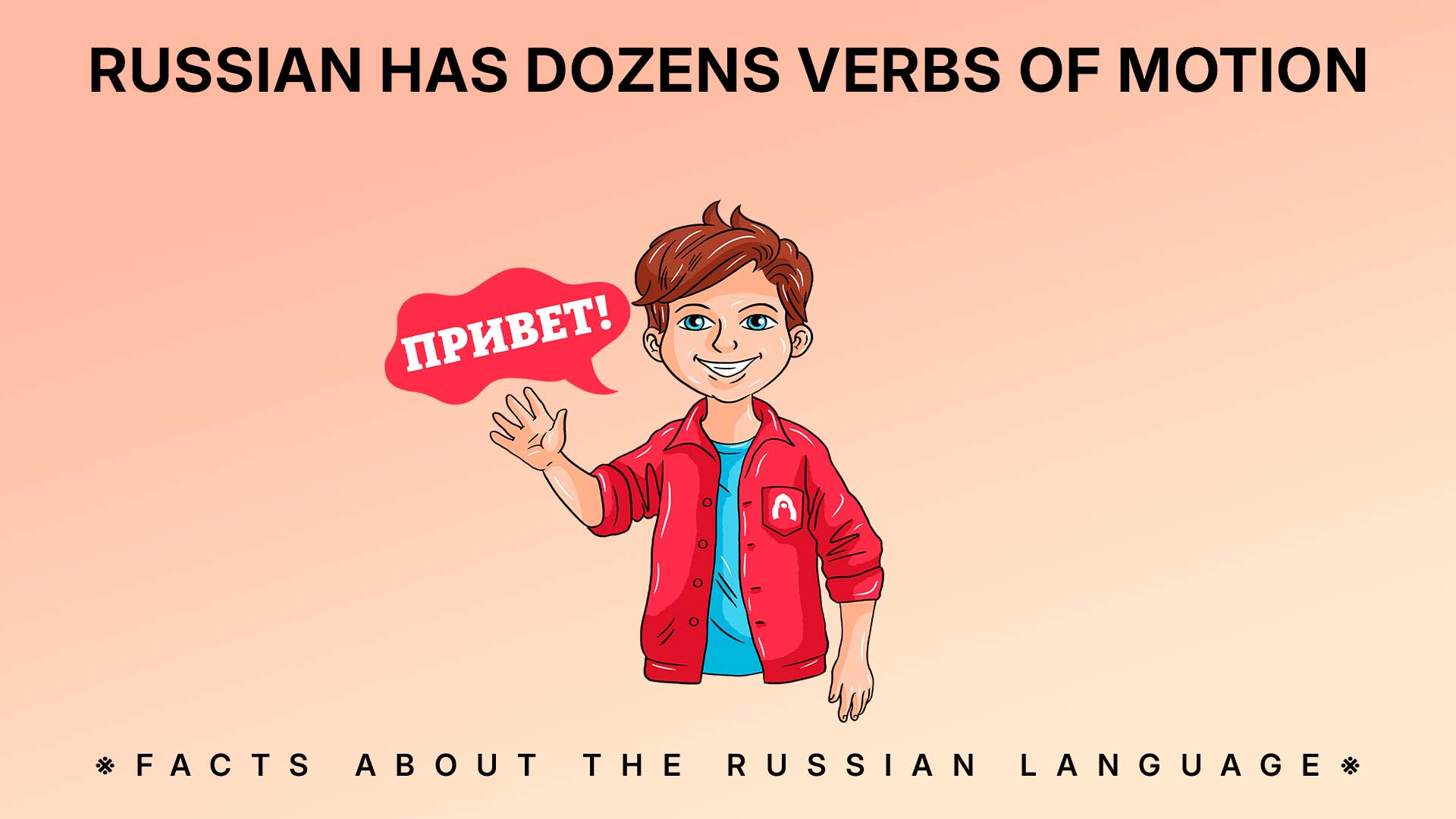
Russian has dozens verbs of motion

Linguists identify 14 (some say 17) pairs of motion verbs in Russian that denote the same action – except one word indicates a single, one-time movement, while the other implies repeated or multidirectional movement.
The simplest example is ‘идти’ (‘to go’, unidirectional) and ‘ходить (‘to go’, multidirectional). ‘Идти’ means moving in one direction (“I’m going to the store”), while ‘ходить’ implies movement in various directions (“I’ve been going to this store for 10 years”).
Other examples include ‘ехать’ (to go by transport, unidirectional) and ‘ездить’ (‘to go by transport’, multidirectional), ‘лететь’ (‘to fly’, unidirectional) and ‘летать’ (‘to fly’, multidirectional), ‘нести’ (‘to carry’, unidirectional) and ‘носить’ (‘to carry’, multidirectional).












